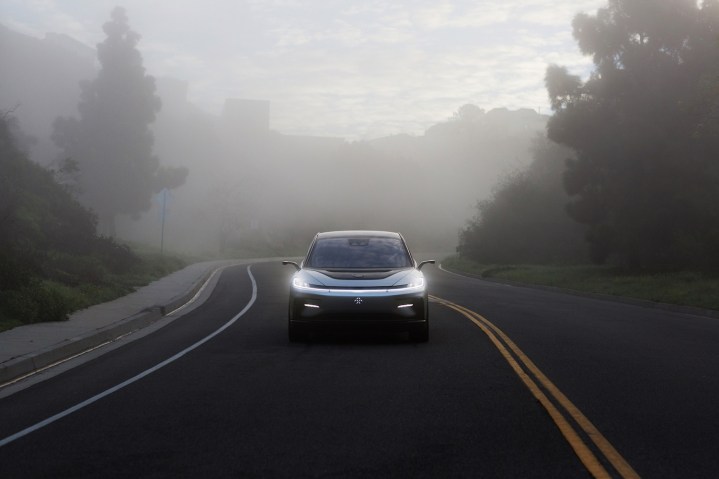
Faraday Future often makes headlines, but not for the reasons executives and entrepreneurs are looking for when running an ambitious startup. This time, the story sounds a little bit brighter. Sources close to the electric car company report that it has secured a $1.5 billion lifeline from an anonymous Hong Kong-based investor.
The California-based, Chinese-backed automaker already received about $550 million of the cash injection, the amount needed to begin paying its loans and stave off bankruptcy, which Faraday has gone to amazing lengths to avoid. Business Insider reports the investor will give the company the remaining $950 million when it reaches project milestones, which haven’t been made public yet.
Faraday Future already knows how it’s going to spend the money. First, it will fully refurbish the factory it’s leasing in central California. The project will include installing the assembly line equipment it purchased for the massive factory it walked away from on the outskirts of Las Vegas.
“We are well into the process of design and permitting and have begun planning our recruitment cadence. As of February 1, the property has been completely vacated, so we will move forward on construction and equipment by the end of the quarter,” Dag Reckhorn, the firm’s senior vice president of global manufacturing, wrote in a statement.
Faraday never planned on remaining a one-model company. It will use a sizable part of its lifeline to develop a second, more affordable model positioned below the FF91, the flagship SUV (pictured) it introduced at the Consumer Electronics Show in 2017. Faraday showed an early design sketch of the new model to a room of representatives from more than 100 suppliers. It depicts an ultra-futuristic, SUV-like vehicle that seemingly borrows a handful of styling cues from the FF91. It’s tentatively called FF81, and is being billed as a mass-market vehicle. We could see it at the upcoming Beijing Auto Show, or Faraday could choose to hold a stand-alone, Apple-style event.
We’ll have a better idea of what the future holds for the company in the coming months, especially after the FF81 makes its debut — assuming it actually happens, and happens on time. Faraday Future insists it remains on track to deliver the first examples of the 1,000-horsepower FF91 by the end of this year.
Editors' Recommendations
- Fake engine noises in electric cars need to die
- The fastest electric cars, ranked by 0-60 mph acceleration
- 2024 BMW i5 unveiled as the first electric 5 Series
- GM plans to phase out Apple CarPlay for EVs, go all-in on Android integration
- Pros and cons of buying a used electric car




